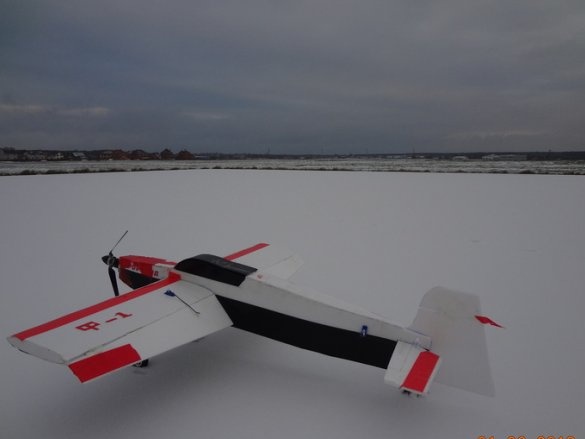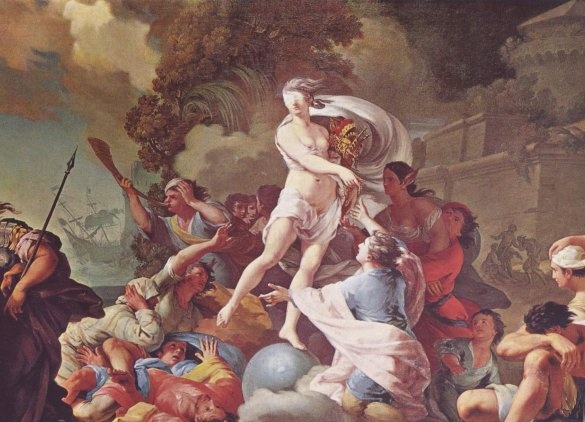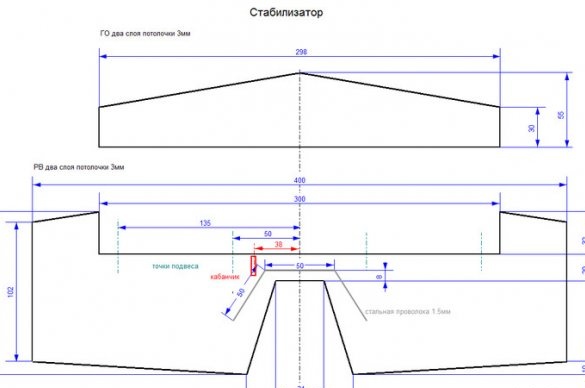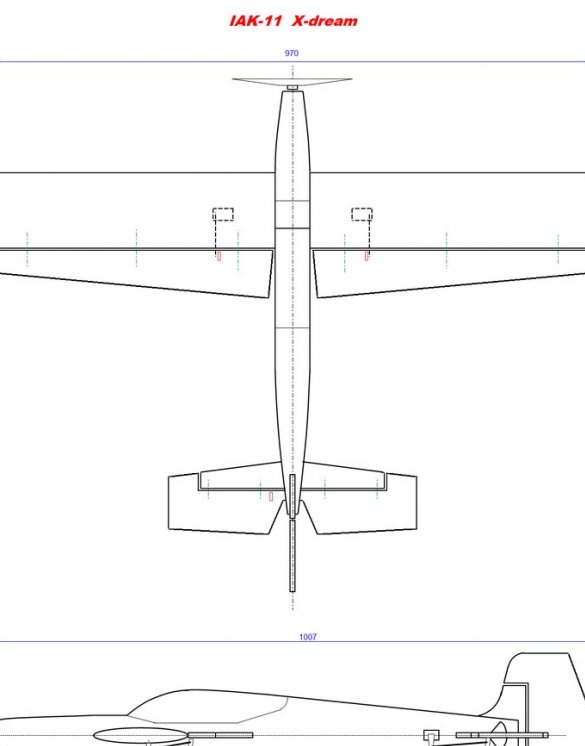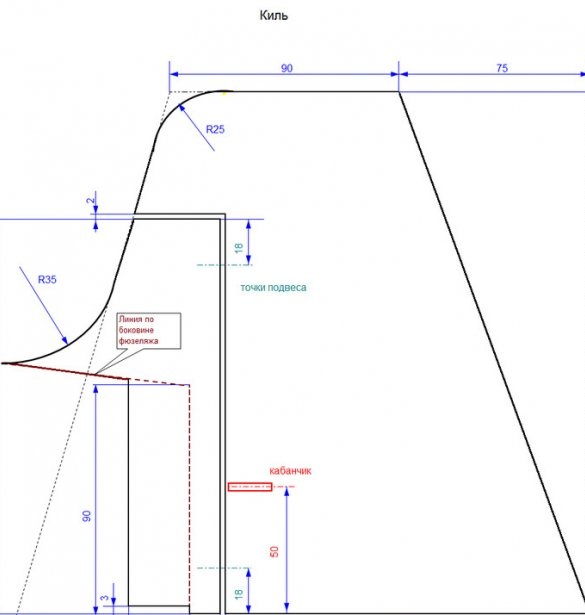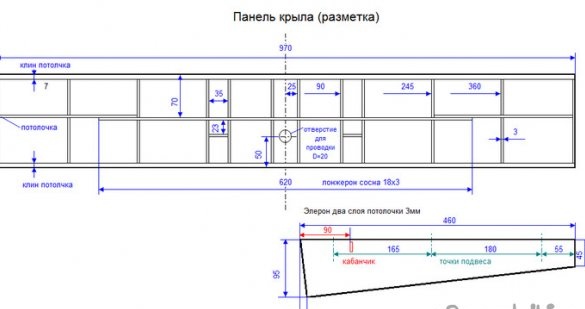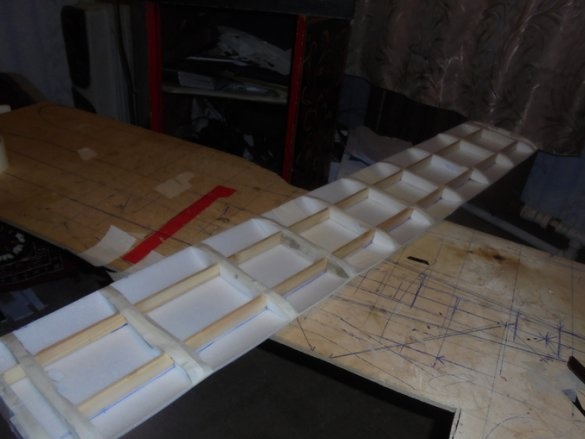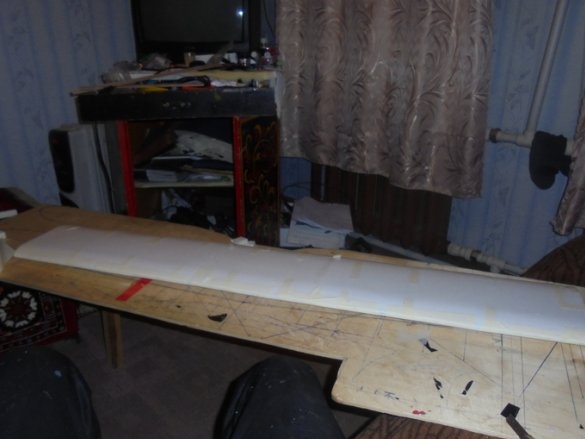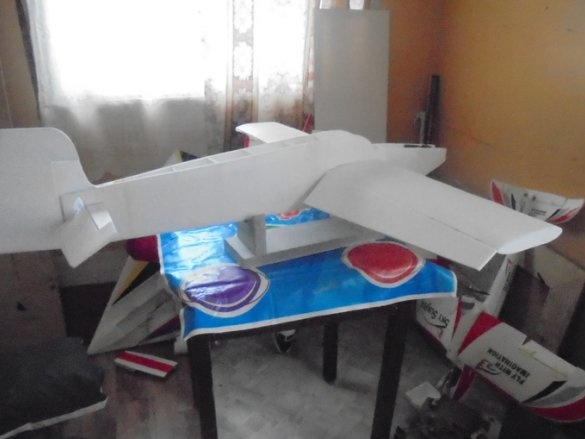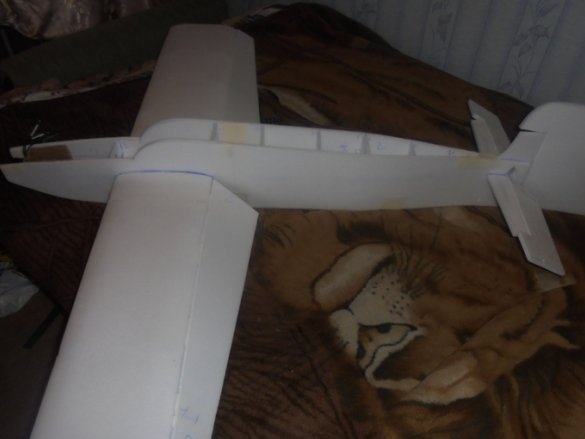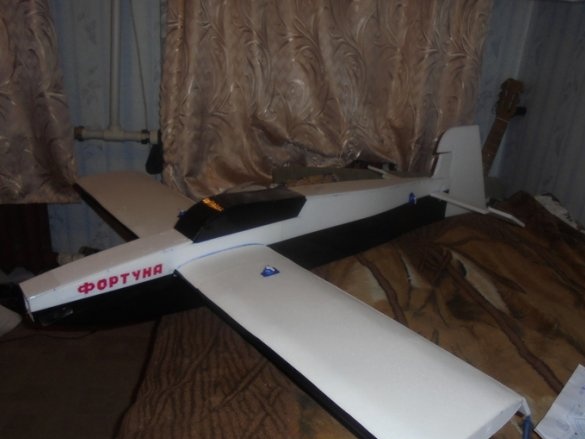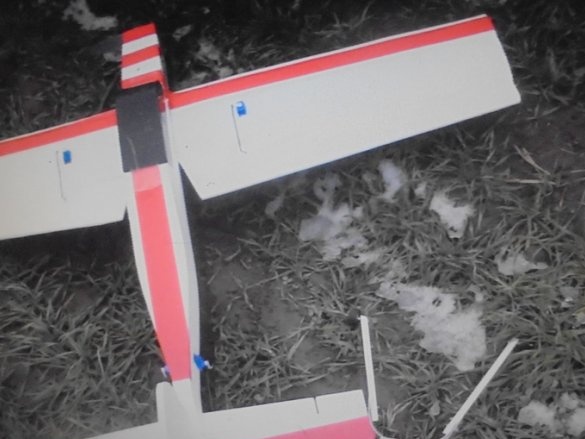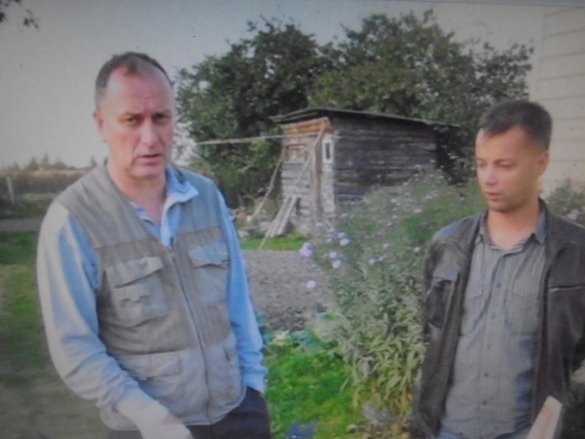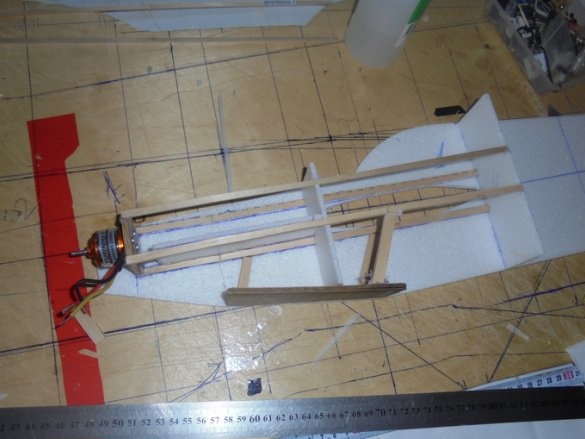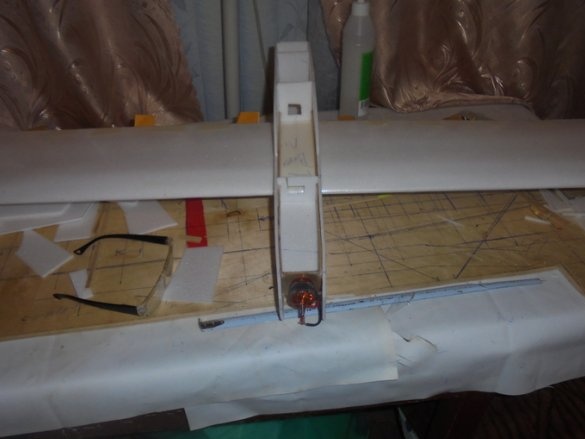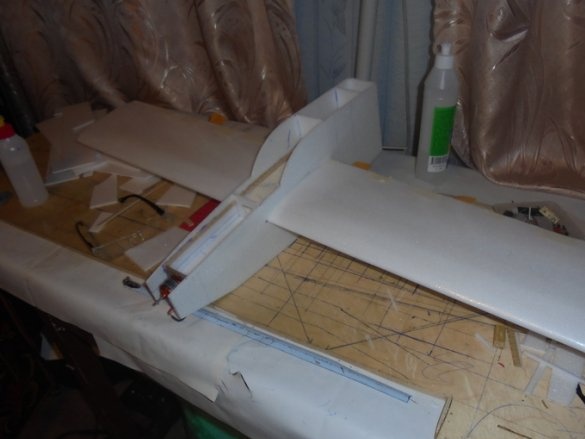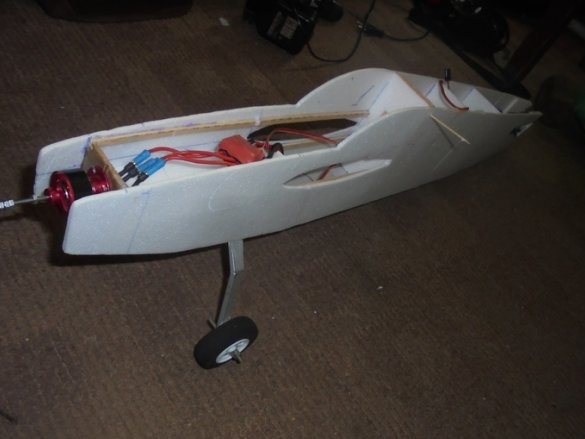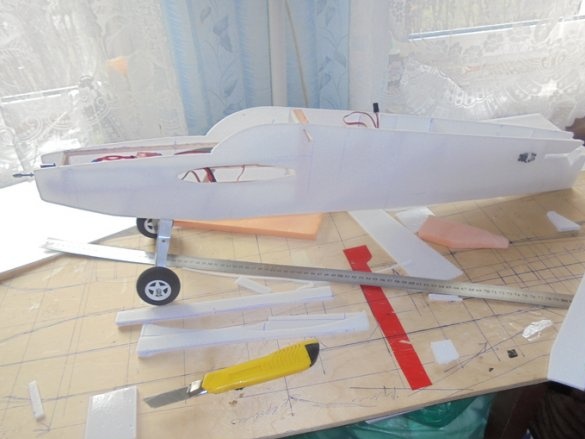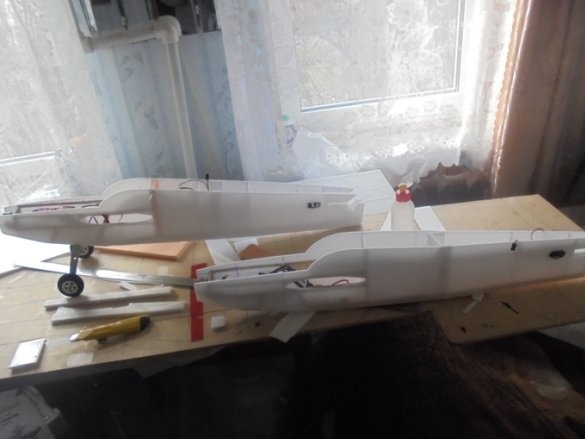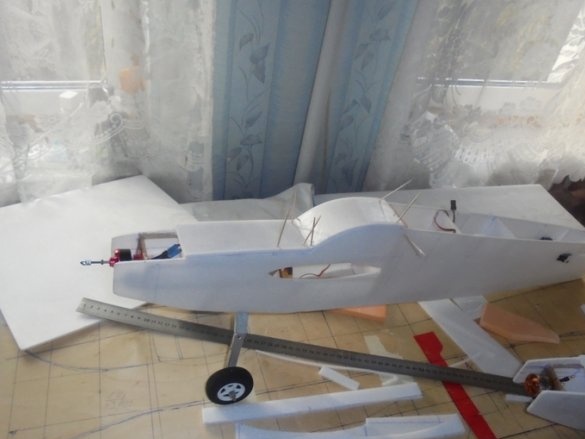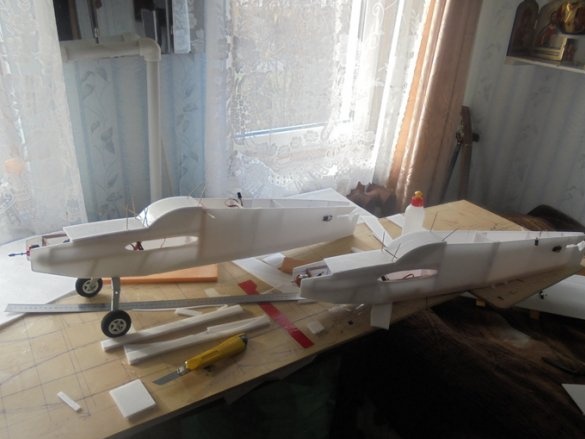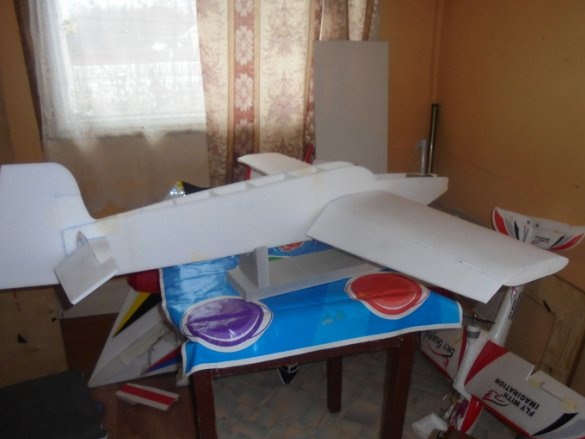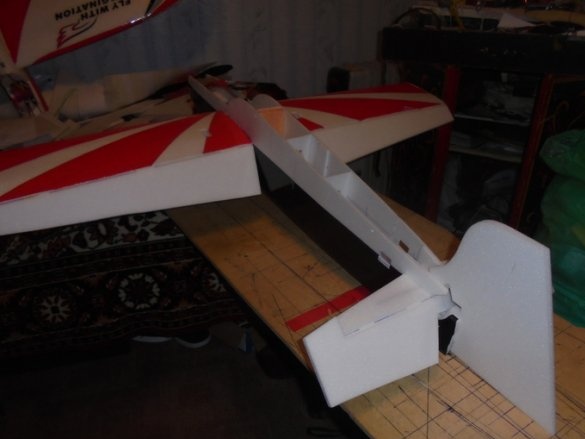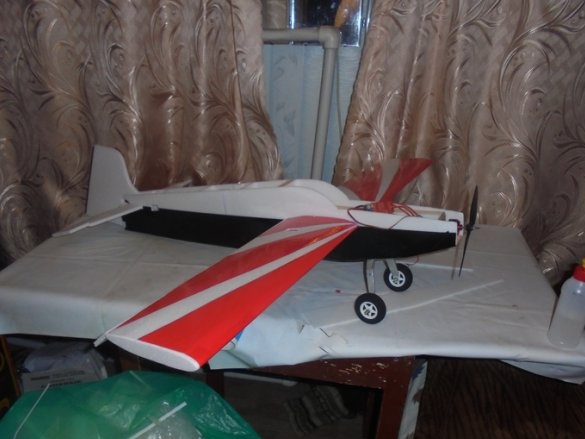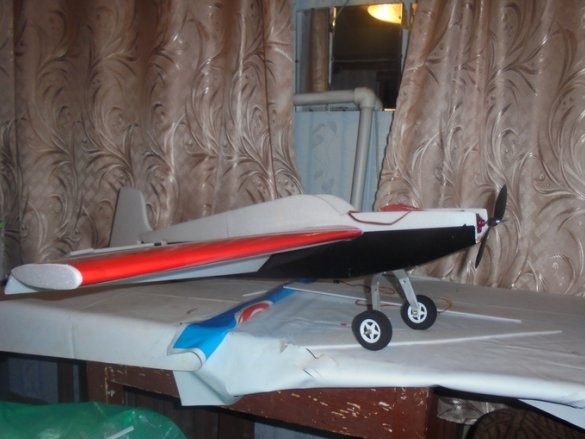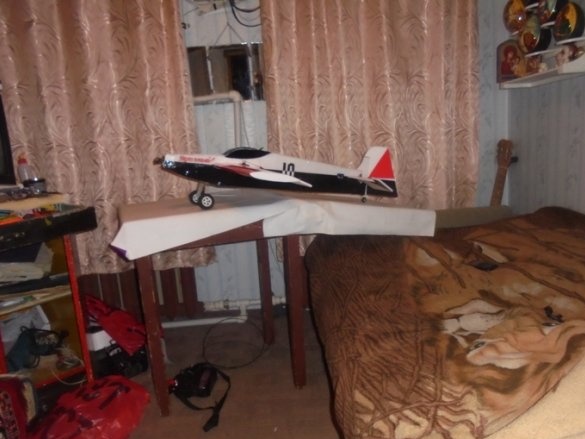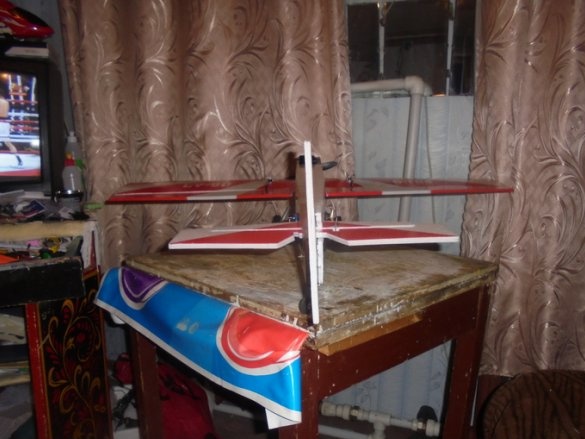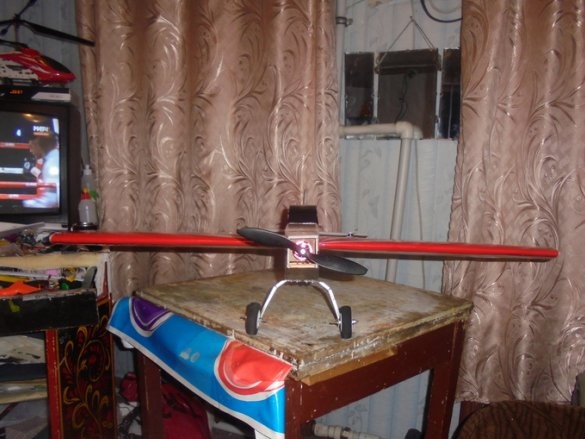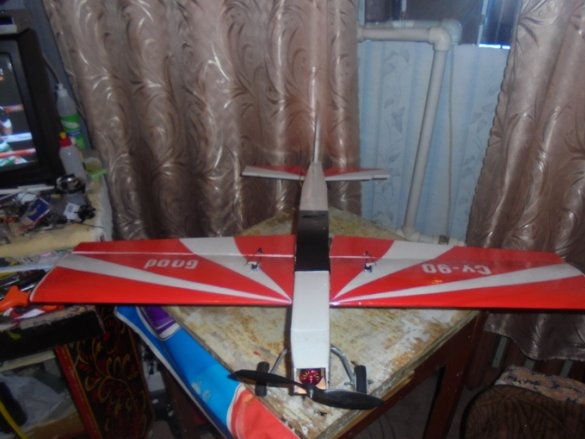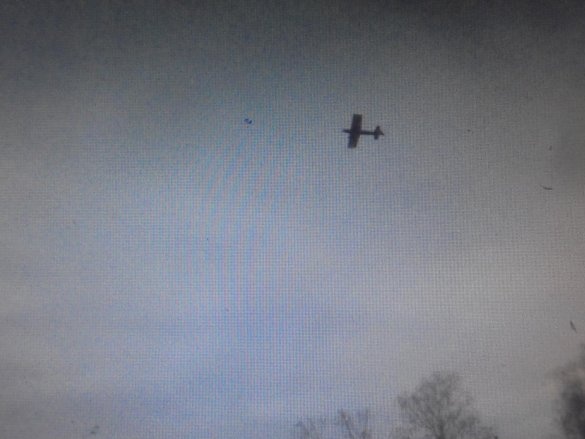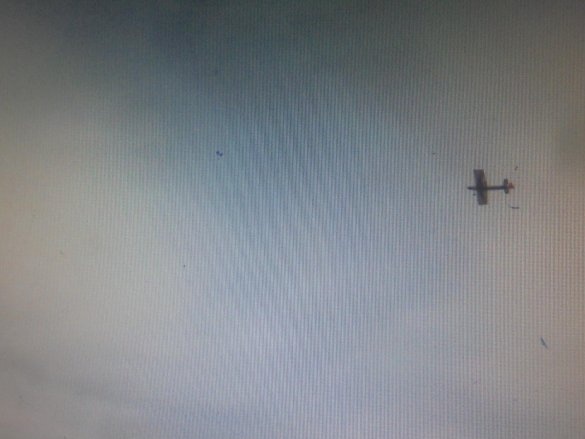What I wrote is not a training manual for building a model, it should rather inspire one of you to create your own aircraft model, give an impetus to the manifestation of creativity, interesting thoughts.
I have never been a supporter of stupid repetition of models built by someone!
Look, learn, adopt all the best, but create your own, unique, unique creations.
Once I decided to distract from experimental aircraft models and do "classics !!" Simply put, I decided to build a regular aerobatics.
His new model I decided to call - "Fortune." So I was hoping that this model will turn out successful.
These drawings were taken as the basis for this and subsequent models.
A few photos of the construction.
These are the wings the model received. This is the basis of a good flight.
Spars are made of 40 x5 mm wooden battens.
A bit of video.
“Fortune” was supportive of me and after it two models appeared on the slipway. I’m building one model for a friend from Yegoryevsk.
Photos of the process of building models.
What would be more spacious when electronics I will put, made the fuselage 1 cm wider.
The wing is reinforced with Penoplex insulation strips and a wooden battens. Ribs are carved from the ceiling.
During installation, to better find the center of gravity (center of gravity), the wing moved 1.5 cm forward.
One model was named “Luck” - “Luck”, and which he built for himself he called “Lucky” - “Good”.
The result is "twin brothers."
Feature models.
All models are built of ceiling tiles (ceilings) - 4 mm.
Universal glue, moisture resistant - "Titanium".
Wingspan - 960 mm.
Length - 816 mm.
On the model "Luck" motor 2826/6 2200 320 watts. screw 7x6,
Battery 3S 1300.
Regulator 40 A.
On the model - “Successful” motor - 2210 1400 210W. Screw - 8x3.8
Battery 3S 1300.
Regulators - 40A.
Servos - NHT900.
This is the Lucky model in the sky under the clouds.
This is how my first experiment on creating classic-model aircraft models ended.


